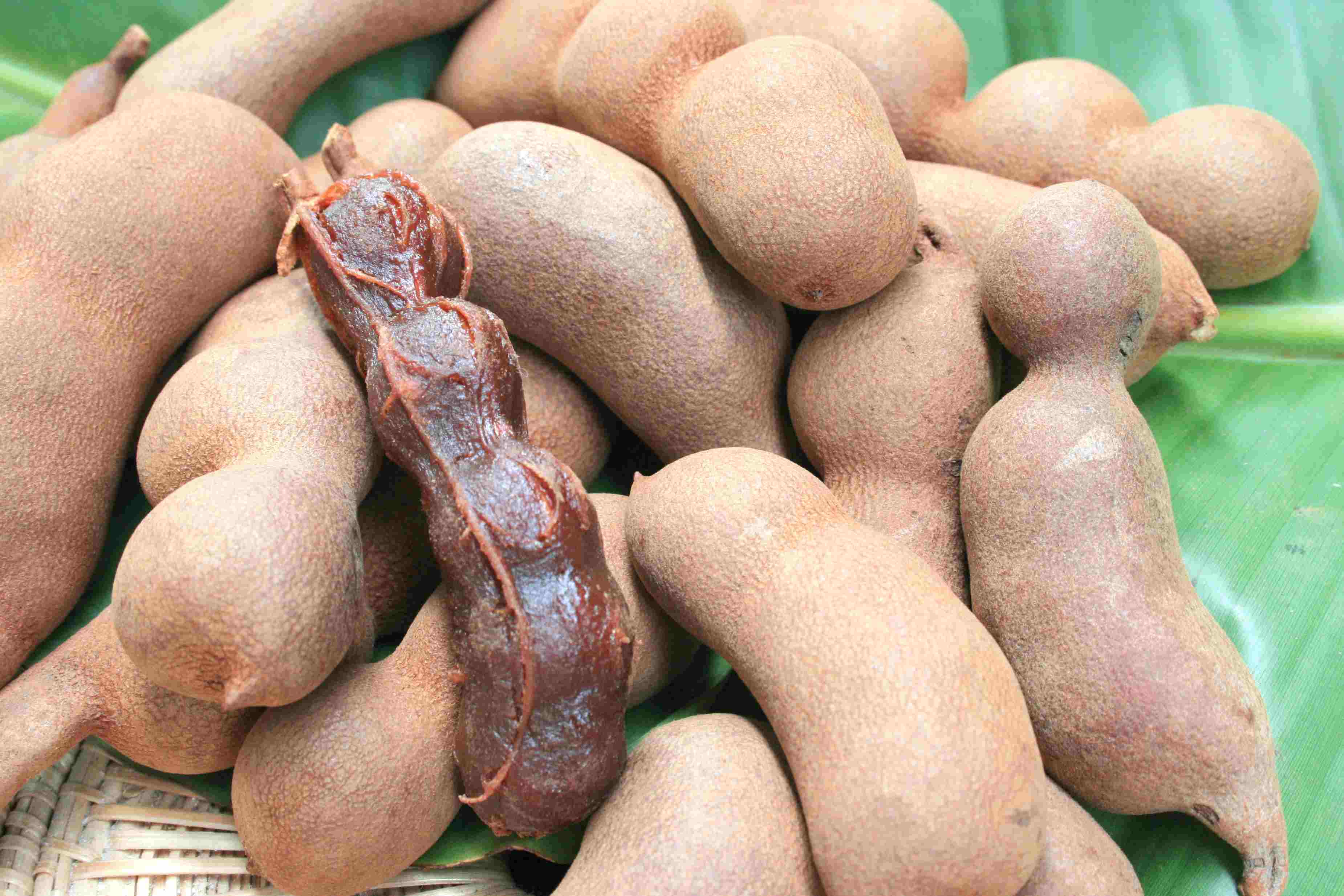
Tamarind fruit pulp is edible and popular. The hard green pulp of a young fruit is very sour and acidic, so much so that it cannot be consumed directly, but is often used as a component of savory dishes. The ripened fruit is edible, as it becomes less sour and somewhat sweeter, but still very acidic. It is used in desserts as a jam, blended into juices or sweetened drinks, or as a snack. It is also consumed as a natural laxative. In Thailand, there is a carefully cultivated sweet variety with little to no tartness grown specifically to be eaten as a fresh fruit. It is also sometimes eaten preserved in sugar with chili as a candy. Tamarind is a tropical tree native to Africa. It was introduced into India so long ago that it has often been reported as being indigenous there, and it was apparently from India that it reached the Persians and the Arabs, who called it tamar hindi IMLI (Indian date, from the date-like appearance of the dried pulp), giving rise to both its common and generic names. However, the specific name, "indica," also perpetuates the illusion of Indian origin. The fruit was well known to the ancient Egyptians and to the Greeks in the 4th Century B.C.E.
Tamarind is a tropical fruit that grows on trees native to Africa but has spread throughout the world. Its scientific name is Tamarindus indica, and it belongs to the legume family. The tamarind tree is tall with a long and straight trunk, and it can reach up to 20 to 30 meters in height. The tamarind fruit is red-brown in color, has a hard outer shell with brown seeds, and a pulp that is sour and sweet in taste.
The tamarind pulp is the most commonly used part of the fruit in cooking. It can be used in a variety of ways: as a seasoning in soups and stews, as a flavoring in sauces and marinades, as a sweetener in desserts, and as a refreshing beverage. Tamarind is one of the main ingredients in many traditional dishes from different parts of the world, including India, Thailand, Mexico, and the Caribbean, to name a few. Its unique taste and versatility make it a popular ingredient in many culinary traditions.
The tamarind fruit grows best in humid and tropical climates and is commonly found in countries such as India, Thailand, Mexico, and the Caribbean. The tamarind fruit is widely available in different forms, including fresh, dried, or processed. The fresh tamarind fruit is usually found in the markets of the countries where it grows or in specialty food stores in other parts of the world. The dried tamarind fruit is also available in both whole and paste forms, and it is a shelf-stable product that can be stored for long periods.
Tamarind has several health benefits that make it an excellent addition to anyone's diet. It is a rich source of antioxidants, particularly tartaric acid, and has anti-inflammatory properties. The high level of fiber in tamarind can also improve digestive health and help regulate blood sugar levels. Additionally, tamarind has been known to have a soothing effect on the stomach, which makes it a go-to natural remedy for digestive issues.
In traditional Ayurvedic medicine, tamarind is also used as a liver tonic, to treat fevers and coughs, as well as to alleviate joint pain caused by arthritis. The leaves of the tamarind tree are also used in traditional medicine to treat skin disorders, such as eczema and psoriasis.
Several studies have been conducted on the health benefits of tamarind, and their results suggest that tamarind consumption can have positive effects on several body systems. For instance, a study showed that tamarind extract could help lower blood pressure and improve cholesterol levels in people with hypertension. Another study demonstrated that tamarind could help alleviate symptoms of osteoarthritis due to its anti-inflammatory properties.
In addition to its health benefits, tamarind is also a valuable ingredient in many industrial processes. For instance, it is a vital component in the production of organic acids, such as tartaric and citric acid, which are widely used in the food and beverage industries. Tamarind extract and its derivatives are also used in the manufacturing of textiles, paper, and adhesives due to their unique properties.
Tamarind is also a popular ingredient in several cosmetic products. Many skincare products contain tamarind due to its ability to hydrate and soothe the skin. It also has antimicrobial properties, which make it effective against acne and skin infections.
Tamarind is a versatile tropical fruit that has various uses and benefits. Its sweet and sour taste makes it an excellent addition to savory dishes, desserts, and beverages. Tamarind's numerous health benefits, including its rich antioxidant and anti-inflammatory properties, make it a valuable addition to anyone's diet. Tamarind's diverse industrial applications and cosmetic uses further make it an essential commodity in different parts of the world.